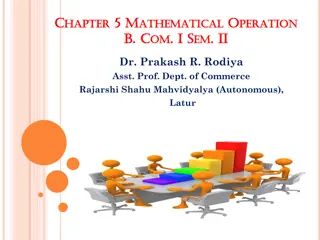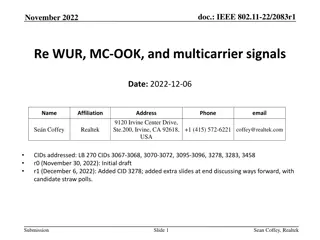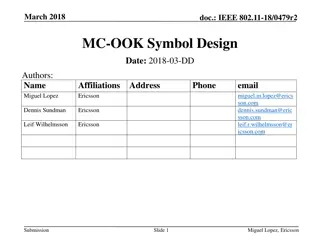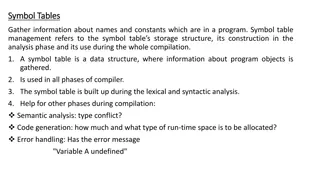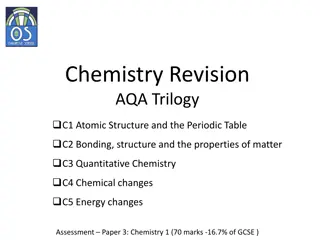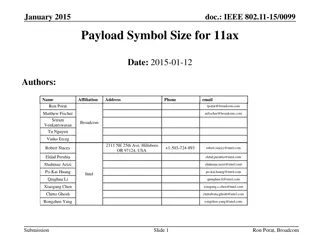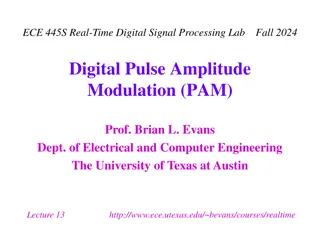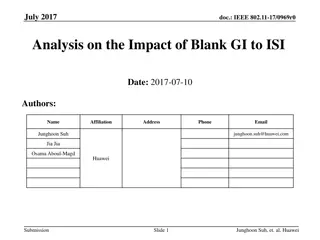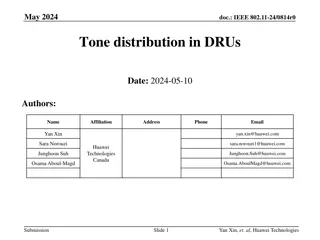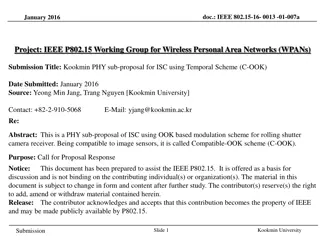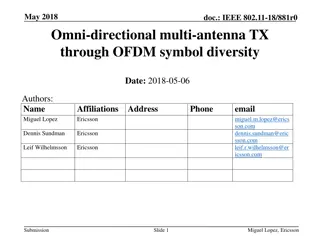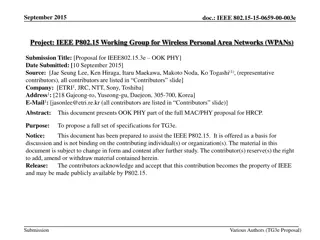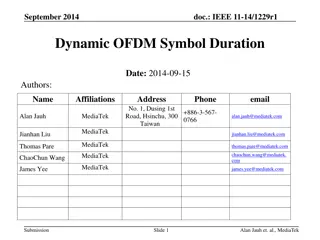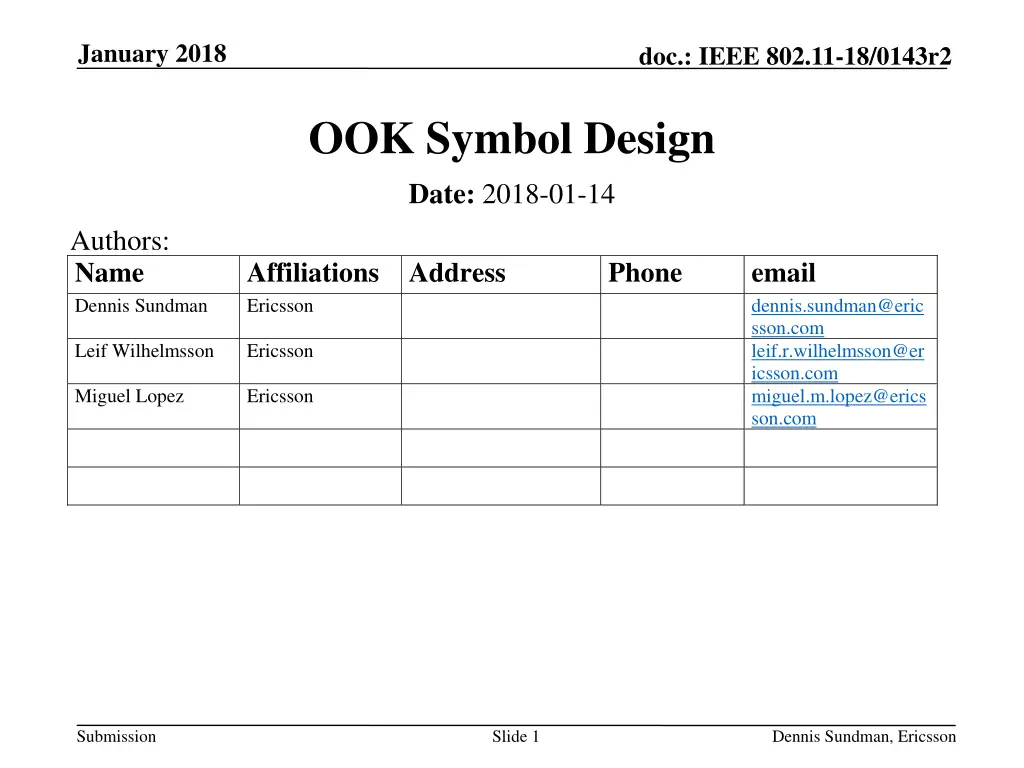
January 2018 IEEE 802.11-18/0143r2 Symbol Design Document
Evaluate different OFDM symbols for signaling, focusing on QPSK modulation with specific energy and power characteristics. The document discusses symbol design aspects, including symbol structure, energy distribution, peak-to-average power ratio, and critical sample properties. It also outlines a script to generate OFDM symbols for simulation purposes in an AWGN channel environment.
Uploaded on | 0 Views
Download Presentation

Please find below an Image/Link to download the presentation.
The content on the website is provided AS IS for your information and personal use only. It may not be sold, licensed, or shared on other websites without obtaining consent from the author. If you encounter any issues during the download, it is possible that the publisher has removed the file from their server.
You are allowed to download the files provided on this website for personal or commercial use, subject to the condition that they are used lawfully. All files are the property of their respective owners.
The content on the website is provided AS IS for your information and personal use only. It may not be sold, licensed, or shared on other websites without obtaining consent from the author.
E N D
Presentation Transcript
January 2018 doc.: IEEE 802.11-18/0143r2 OOK Symbol Design Date: 2018-01-14 Authors: Name Dennis Sundman Affiliations Address Ericsson Phone email dennis.sundman@eric sson.com leif.r.wilhelmsson@er icsson.com miguel.m.lopez@erics son.com Leif Wilhelmsson Ericsson Miguel Lopez Ericsson Submission Slide 1 Dennis Sundman, Ericsson
January 2018 doc.: IEEE 802.11-18/0143r2 Abstract Evaluate some different OFDM symbols to use for signalling on 3 different fixed symbols 1 random QPSK, meaning different symbol for each use only DC component (benchmark for AWGN channel) Submission Slide 2 Dennis Sundman, Ericsson
January 2018 doc.: IEEE 802.11-18/0143r2 WUS: Symbol Design The symbol is 4us long, and has the structure [CP OFDM], where CP is 0.8us long CP OFDM We would like to be able to use the first, or the second half of the symbol to generate symbols that are 2us long (for the high rate mode) CP OFDM Thus, we want the symbol to have equal energy on the first and second half We may want the symbol to have low peak-to-average-power-ratio We may want the symbol to have a nice ramp up from the zero-state Submission Slide 3 Dennis Sundman, Ericsson
January 2018 doc.: IEEE 802.11-18/0143r2 WUS: Symbol Design QPSK Script There are 12 active subcarriers QPSK is a good choice of modulation (each symbol equal power) There are 2^24 = 16 777 216 possible symbols Create a script that generates all possible OFDM symbols, and save those with properties according to previous page Start simulation and go to sleep Submission Slide 4 Dennis Sundman, Ericsson
January 2018 doc.: IEEE 802.11-18/0143r2 WUS: Four Categories We try all symbols, and store the symbols according to four different criteria Energy difference: Means that the first half of the symbol have energy as close to as possible to the second half of the symbol Peak to Average Power Ratio (PAPR): Lowest PAPR Minimum power critical samples: Means that sample number 1, 40 and 80 all have as close as possible to 0 in amplitude. (i.e. min the sum s_1^2 + s_40^2 + s_80^2) Balanced figure: A weighted average of the above (ad-hoc) Submission Slide 5 Dennis Sundman, Ericsson
January 2018 doc.: IEEE 802.11-18/0143r2 AWGN simulations Results for the AWGN channel Submission Slide 6 Dennis Sundman, Ericsson
January 2018 doc.: IEEE 802.11-18/0143r2 Conclusions There is a gain, albeit small, that can be obtained by optimizing the OFDM symbols It seems OFDM symbols with low PAPR are good, but more studies would be needed Submission Slide 7 Dennis Sundman, Ericsson


